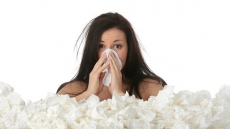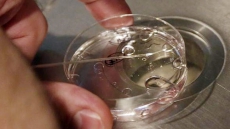The moment we feel knee pain our first thought is, “Am I getting old, or do I have arthritis?” It’s true a large per cent of knee pain is a result of arthritis or to some extent could develop into some form of it. Arthritis at the knee is often due to excessive forces and the natural anatomy of the knee joint, (wear and tear). There are many forces travelling up and down through the knee, therefore it is susceptible to varying levels of injury. So what should you do…
Tip 1: Take micro stretch breaks every hour
Maintain good flexibility in your whole body especially around the lower extremities.
This helps to reduce pulls and strains at the knee. Prolonged sitting or standing can aggravate the situation. Come to think of it most of us do too much of this with our daily activities.
Key stretches: Inner thigh muscle, Low back /hamstring, Calf, Hip flexors
Tip 2: Maintain good muscle tone and strength
Muscle imbalances lead to stress on the joint line medial (inner) more than lateral (outer) knee. Weak hip muscle can lead to hip rotations and therefore generate uneven forces to the knee and even ankle. Therefore low back and hip muscles need close attention and strengthening as they bare and transmit the body’s weight.
Key focus areas: Hip extensors, Core strengthening
Tip 3: Healthy Weight management
It is important to understand the effect of body weight on the knees. An unhealthy weight adds more stress to the knee and unfortunately also makes it harder to increase the intensity of your exercise needed to help loose weight. A healthy diet and consistent exercise routine can help maintain strength and tone to the joint and support you with your weight loss goals.
Key consideration: Poor core strength will add load to knee, by altering the mechanics and weight bearing patterns at the knees and feet.
Tip 4: Listen to your body
Walking is good for health and conditioning but if it is painful to do so, ensure you are wearing the correct footwear as forces travelling upward can affect the knee. When needed don’t shy away from appropriate aids as it is better than allowing progression of symptoms to hip and back which can lead to arthritis in other areas, or loosing mobility in a joint.
Key considerations: Using walking poles when exercising adds support and increases tolerance; Swimming or a pool program are great for progression and reduce weight bearing impact
Tip 5: Seek medical attention
If pain is increasing, getting worse or changing location, see your doctor to rule out other causes. Pain can be a result of injury, arthritis or osteoporosis in which case treatment may vary.
Key consideration: Temporary medication, or investigation may be needed to determine underlying concerns; Specific guided exercise may be required under supervision of a Physiotherapist for movement pattern correction or Osteopathy treatment for manual therapy to correct alignment and force patterns.
Sumen Sumen Singla-Goyal is a registered physical therapist and osteopathic manual therapist. She has been actively serving the Lower Mainland for over 10 years. She is very passionate about her work and wants to empower her patients and community with tools for healthy living.






